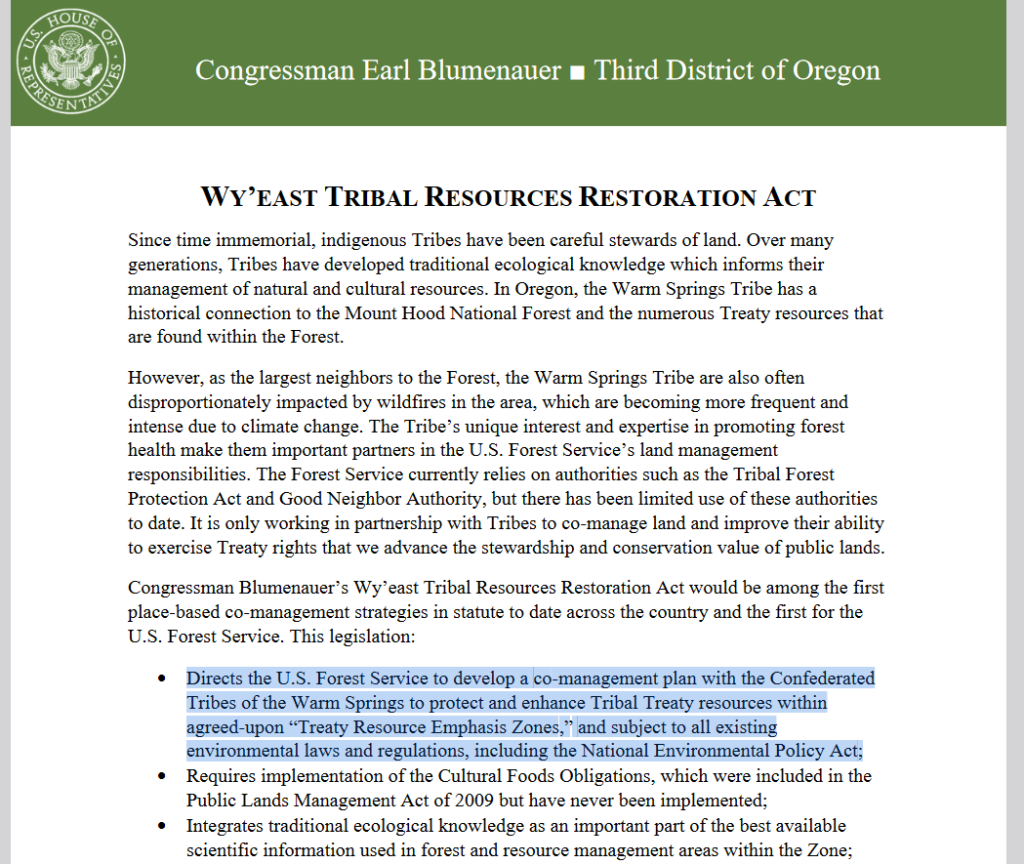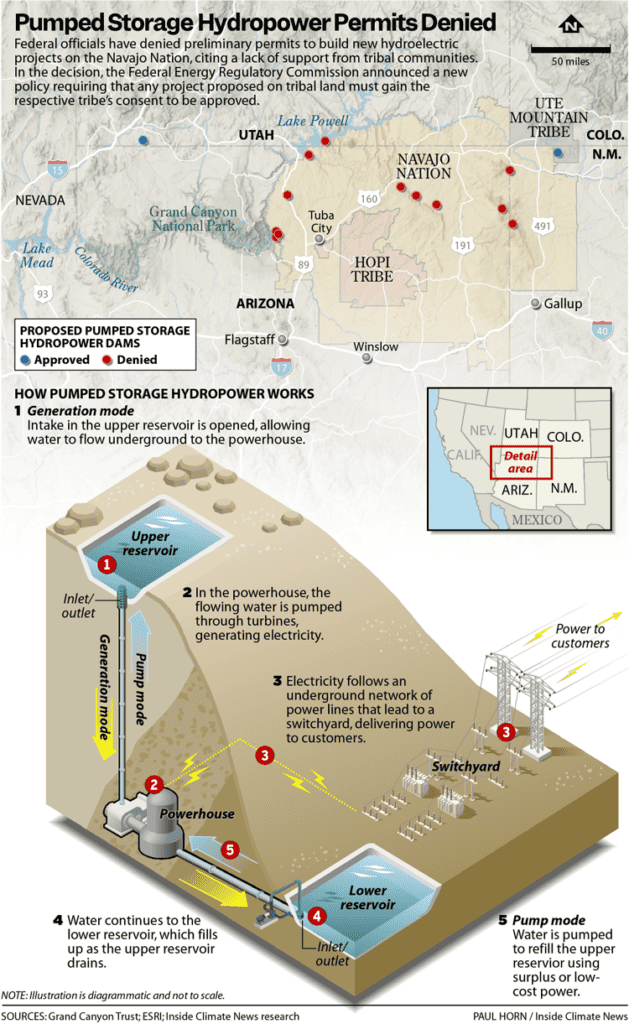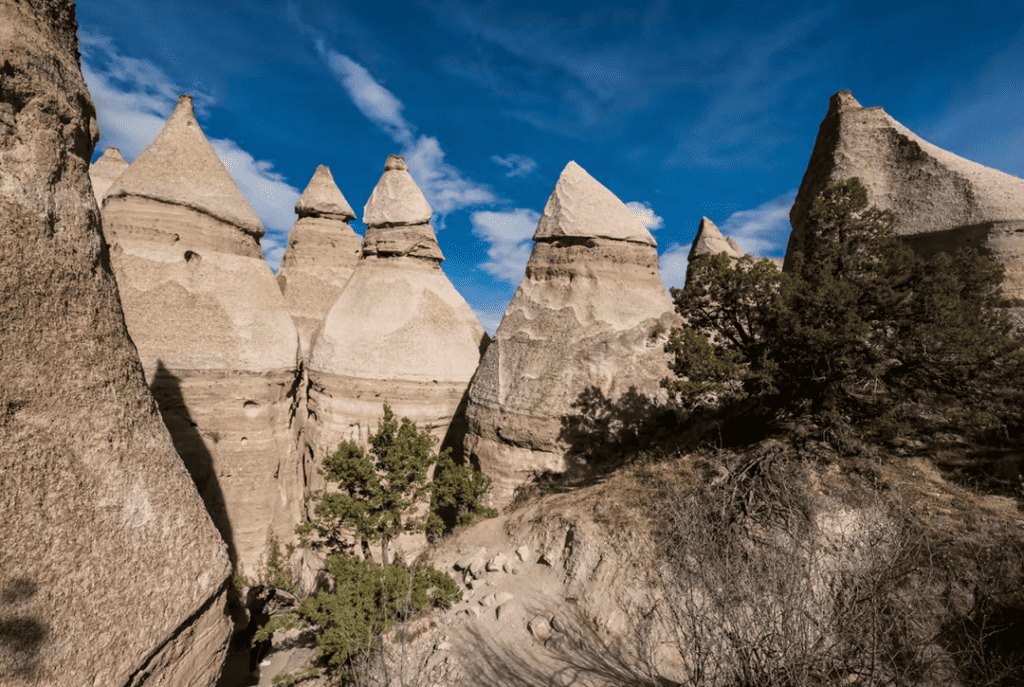Here’s a link to the story. Note that it is part of the Climate Desk collaboration, described here.
The reporter starts out with the Yocha Dehe Wintun Nation, who did not want a wind turbine project in a specific place.
That’s what happened earlier this month when the Biden administration expanded a national monument to include Molok Luyuk, joining the mountain ridge to the nearby Berryessa Snow Mountain National Monument, nearly 350,000 acres of coastal range in Northern California. Tribes are now working on a co-stewardship agreement for the Molok Luyuk area, but not for the whole national monument.
But the tribes that have a relationship with Molok Luyuk aren’t done with their advocacy. They’ve protected the area from energy development, but they still have little say in how the land is managed. While the federal government has pushed co-stewardship agreements over the years, national monuments are still considered property of the federal government.
Melissa Hovey is the manager at Berryessa Snow Mountain National Monument, and she said that co-management happens between BLM and the Forest Service. These federal agencies can enter into co-stewardship agreements with tribes, but they can’t delegate management without congressional approval.
“Co-management means decision-making authority,” she said. “Co-stewardship means one entity still has the decision-making authority.”
You would think that “co-stewardship” and “co-management” would be simple terms to define, but there are numerous federal documents that have used the two terms interchangeably over the years. Co-stewardship is a broad term that describes agreements made between federal agencies and tribal nations to hash out shared interests in the management of federal lands. Co-management refers to a stronger tribal presence and decision-making power.
Congressional action is not the only way to gain co-management powers. The Bears Ears Inter-Tribal Coalition in Utah has one of the most successful stories of tribes gaining co-management status—they were given “true co-management” by an Intergovernmental Cooperative Agreement.
In 2022, the federal government agreed to co-manage Bears Ears National Monument with the Hopi Tribe, Navajo Nation, Ute Mountain Ute Tribe, Ute Indian Tribe of the Uintah and Ouray Reservation, and the Pueblo of Zuni. For the first time ever, tribal nations worked with federal agencies to draft a resource-management plan that would dictate how a national monument should be run.
I’m still a little confused, if Hovey says “co-management means decision-making authority” and Bears Ears has co-management (without Congressional action?) .. meanwhile we see this from E&E News yesterday..
Native Americans and conservation advocates on Monday rolled out a campaign urging the Biden administration to adopt a strategy that emphasizes tribal management of the Bears Ears National Monument.
The Bears Ears Inter-Tribal Coalition — composed of leaders of the Navajo Nation, Ute Indian Tribe, Zuni Tribe, Hopi Tribe and the Ute Mountain Ute Tribe — and outdoor retailer Patagonia pledge to press for adoption of a management plan that stresses resource protection along with the use of Indigenous knowledge to steward the 1.35 million-acre monument in southeastern Utah.
“Bears Ears holds deep spiritual and cultural significance, and is rich in ancestral history,” said Craig Andrews, who serves as co-chair of Bears Ears Inter-Tribal Coalition and vice chair of the Hopi Tribe. “Protecting Bears Ears ensures that future generations can continue to connect with our history and cultural identity.”
The group is urging the Biden administration to adopt a version of the management plan known as Alternative E, one of five options being weighed by the Bureau of Land Management and the Agriculture Department’s Forest Service. In a draft of the plans published in March, both agencies identified that version of the management plan as their “preferred option,” although a final selection has yet to be made.
***************
So if Tribes have decision-making authority, why do they need a campaign to adopt the strategy? In fact, why did they need five alternatives? They could have had “current conditions” and “preferred by Tribes” and save much money and time of agency employees and the public. Also I’m a little leery of Patagonia having a strong presence in this.. getting rid of OHVs opens up more country for those who buy their stuff. That is, the folks who can afford to buy their stuff. It looks like the spinoff charitable organization from Patagonia helps fund many groups we are familiar with.
Anyway, back to the Grist article.
****************************
Patrick Gonzales-Rogers is a professor at the Yale School of Environment where he specializes in tribal sovereignty and natural resources. He is also the former director of the Bears Ears Inter-Tribal Coalition.
Co-management allows tribes to exercise sovereignty, according to Gonzales-Rogers. “It allows them to be more assertive,” he added. And when that happens, tribes can bring in religious and spiritual practices to utilize traditional knowledge, wisdom that had been minimized by federal agencies in the past.
Gonzales-Rogers is hopeful that, exponentially, these choices will compound, “and may even have a nexus to say something like landback,” a reference to a movement that is not only rooted in a mass return of land to Indigenous nations and peoples, but also tribes having sovereignty to steward the land that was taken from them.
Gonzales-Rogers thinks the two terms have not been very well-defined over the years, but said co-stewardship agreements might be a good way to start building to co-management.
This is confusing, because the FS and BLM are already required, as far as I know, to use traditional knowledge in decision-making on all lands, and maybe co-stewardship as well. Is sovereignty like being pregnant, you either are or you aren’t? Or are there degrees of sovereignty? It seems to me that we won’t know what “sovereignty” really means for a place that’s co-managed until an Admin disagrees with a Tribe about management.
And the more tribes have autonomy over their ancestral lands, the better it is for conservation goals. According to a recent study, equal partnerships between tribes and governments are the best way to protect public lands—the more tribal autonomy, the better the land is taken care of.
The reporter asserts that based on an international study. Some international studies say the same thing about local people.. Not to be unduly skeptical, but the study involved lots of different places and the authors’ own view of what is more autonomy and what is more conservation. And I just think about the Izembeck Road, the Utah oil train and so on, as Wuerthner described in a previous post:
What I call an Indian Iron Curtain exists among the media and conservation organizations. Like the old Soviet Union Iron Curtain, which attempted to promote Communism and censored anything contradicting the notion that Communism was anything but a perfect social and political system. The Indian Iron Curtain exists to promote tribal people as somehow exemplary conservationists.
Who is doing this in the media? For example, who funds the Climate Desk Collaboration? Here’s a story about how it started from Yale Climate Connections. Since I’m an alum, I thought they might let me know who funds YCC. No such luck, donor privacy invoked. But back to the Climate Desk.
To help fund The Climate Desk, including hiring freelance writers, the partners have so far secured a $100,000 grant from the Park Foundation. Other money has come from the Surdna Foundation, which has supported Mother Jones in the past.
Grant money has come without any expectations of control over editorial content, the partners said.
I’m sure that’s true, but it seems to me that funding reporters at Grist is likely to produce different copy than for example, funding reporters at the National Review.










